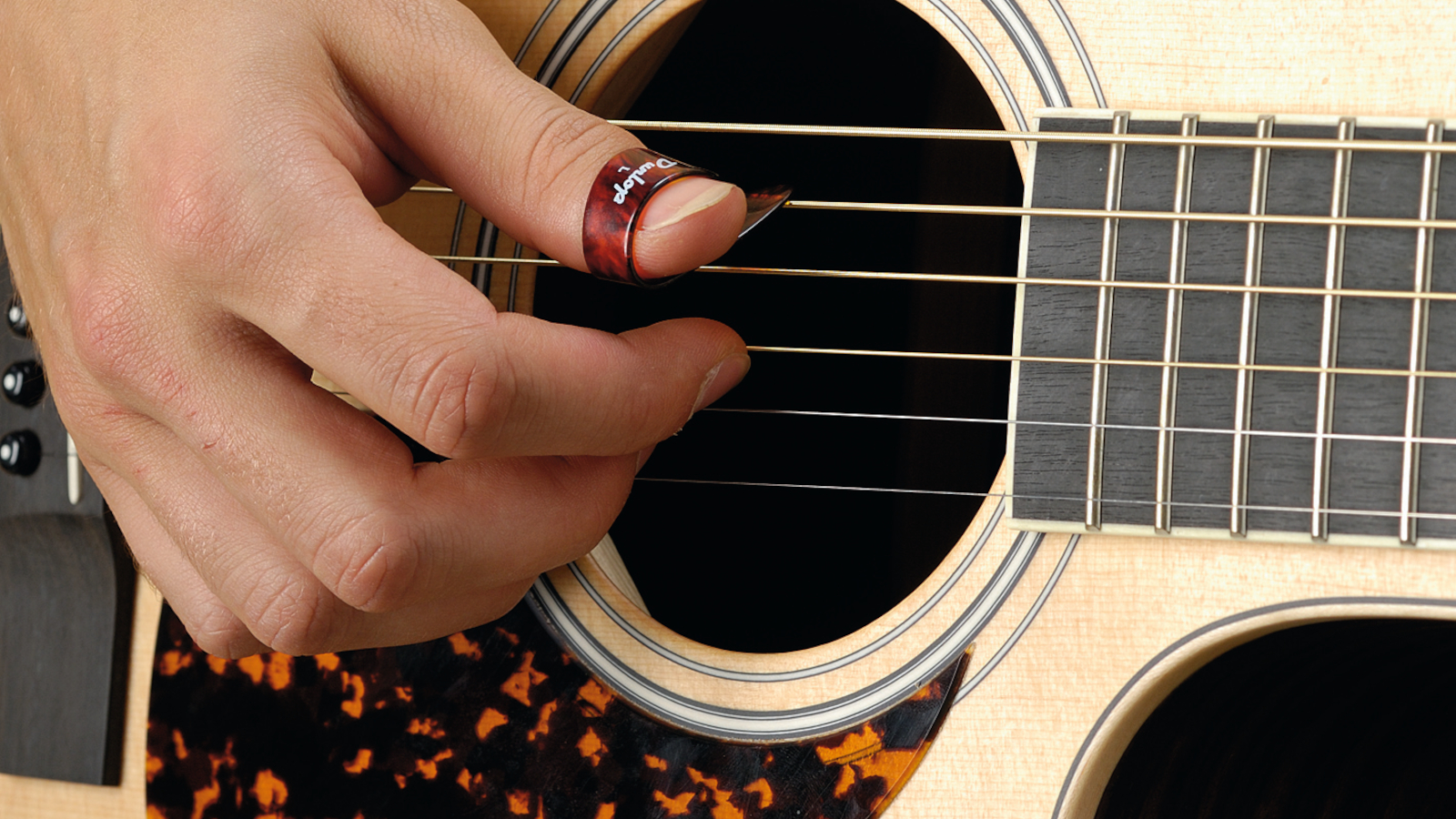Five Great Ways to Improve Your Thumb Technique and Make Your Sound Stand Out
Free your thumb and fabulous fingerstyle will follow

The opposable digit sticking out from our human hands is a miracle of evolution essential to playing any guitar style, especially fingerstyle acoustic guitar.
Dropping the standard pick allows the thumb to work in myriad ways that can help make your playing as unique as your fingerprint. Free your thumb and fabulous fingerstyle will follow.
Here are five tips to help you along…
1. Get Educated
The standard method of playing with an “educated thumb” requires the ability to keep a rudimentary bass line going on the lower strings while plucking out a syncopated melody on the treble strings.
Check out the music of “Mississippi” John Hurt or Chet Atkins for source material. Use a thumbpick for stronger attack, the thumbnail for a medium attack or the fleshy tip of the thumb for a softer touch.
2. Keep It Elementary
Even rudimentary playing with an educated thumb requires copious practice to manage multiple parts. But don’t despair. Plenty of excellent material can be played with an elementary thumb.
Many fantastic blues guitar players, such as R.L. Burnside, use a simplified technique where the thumb thumps along in the low end on the downbeat in a particular rhythm, or whenever is clever, while the fingers pluck melodic licks over the top, often using a slide in an open tuning.
All the latest guitar news, interviews, lessons, reviews, deals and more, direct to your inbox!
Luther Dickinson learned straight from the masters. He helpfully explains that, “as complicated as fingerstyle can get, it can be broken down into two motions: pinching, where thumb and a finger are striking together, and then any number of back-and-forth syncopations of alternating thumb and fingers.”
Maybelle Carter, the founding mother of country guitar, played with an adaptation known as the Carter Scratch, whereby the thumb (equipped with a thumbpick) carries the melody, while the index finger (with a fingerpick) strums chord accompaniment. Her playing with the Carter Family laid the blueprint for what became a common style.
One of the most free-feeling techniques involves plucking notes on lower strings with the thumb, followed by a cascade of fingers rolling in either direction, most naturally from fingers three to one, but also from one to three. Incorporate the pinkie when you’re feeling especially adventurous.
For trills covering three adjacent strings, lose the ring finger. The thumb-first cascade works in any tuning, but open tunings offer more opportunities than standard.
Modal tunings are particularly cool because they facilitate a vast drone, and the lack of a third in the tuning equates to practically no wrong notes on the fretboard. Check out the “free raga” style of American primitive players such as Robbie Basho and Richard Osborn.
4. Use the Thumb Pick
Any bass player will testify that the thumb rules for creating big, strong notes. Practice playing melodies in positions up and down the fretboard strictly with the thumb, and see how it automatically keeps you from noodling. Grow a bit of a thumbnail to take full advantage of the various plucking approaches natural to the thumb.
Anchor your hand with the fourth and fifth fingers near the lip of the sound hole while plucking notes with the thumb, and notice how the lack of any palm muting allows the sympathetic resonance of various strings to enhance the plucked melodies.
5. Learn the "Thumbstick"
Percussive fingerstyle playing requires different thumb techniques. One essential move is learning how to use the thumb like a drumstick to create percussive sounds on the strings or body.
Produce the “thumb snare drum” popularized by Andy McKee by whacking the top with the side of the thumb, with a focus on the joint between the sixth and fifth strings.
That same motion and fulcrum focus is also great for hitting a single string percussively. Do it near the sound hole for a full sound, or use the upper region of the fretboard as a springboard, for more “pop.”
Jimmy Leslie is the former editor of Gig magazine and has more than 20 years of experience writing stories and coordinating GP Presents events for Guitar Player including the past decade acting as Frets acoustic editor. He’s worked with myriad guitar greats spanning generations and styles including Carlos Santana, Jack White, Samantha Fish, Leo Kottke, Tommy Emmanuel, Kaki King and Julian Lage. Jimmy has a side hustle serving as soundtrack sensei at the cruising lifestyle publication Latitudes and Attitudes. See Leslie’s many Guitar Player- and Frets-related videos on his YouTube channel, dig his Allman Brothers tribute at allmondbrothers.com, and check out his acoustic/electric modern classic rock artistry at at spirithustler.com. Visit the hub of his many adventures at jimmyleslie.com
